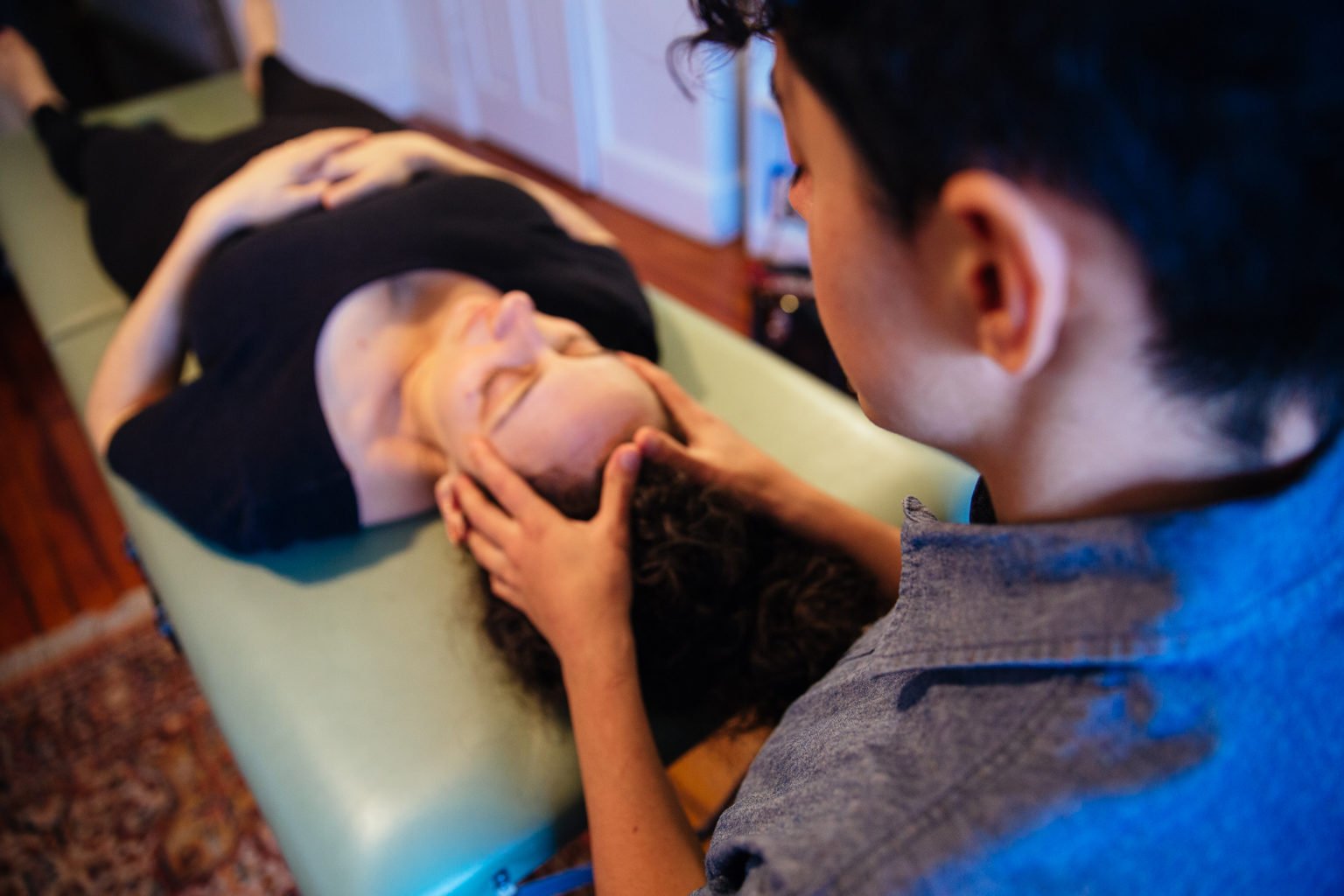Osteopathic Manipulative Medicine (OMM) is an umbrella term for the gentle form of medical body work used by osteopathic physicans (DOs) to diagnose and treat disease with their hands.
Problems in bones, joints, ligaments, muscles, tendons, and fascia (connective tissue) may cause pain or interfere with nervous, circulatory, and internal organ function. OMM relieves restrictions in these structures to promote the natural healing capacity of the body.
A rigorous understanding of human anatomy and a highly trained sense of touch are the bedrock of practicing OMM. There is a wide array of techniques and styles in the osteopathic toolbelt, and every DO combines them a little differently. My style is on the gentler side, using small motions to direct your (brilliant and inherently capable) body’s attention to restrictions so it can reboot unhelpful nerve firing patterns. My practice is strongly influenced by fascial and cranial techniques.
What is Osteopathic Manipulative Medicine?
Intro to Osteopathy
Osteopathy is a complete holistic system of medicine based on hands-on diagnosis and treatment of disease. It was developed by Andrew Taylor Still, a physician searching for a better way to help patients find health than the purgatives and bloodletting popular among his MD contemporaries in the turn of the 20th century.
The 4 Tenets of Osteopathy:
The body is a unit and the human being is made of mind, body and spirit.
You are one indivisible structure. No one part can be treated in isolation without impacting the whole.
The body is capable of self regulation and healing.
Your body is a beautifully complex structure that is constantly regulating itself on molecular, cellular, and systemic levels to continue functioning. This combined effort of 37.2 trillion cells is the inherent wisdom of your body and it always does the best it can with what it has.
Structure and function are reciprocally inter-related.
If your car has a bent axle (structure), its driving will be crooked (function). This will become evident in the wear pattern of the tires (structure), which will then impact the ability to handle on wet roads (function). A resulting accident could damage the door (structure) which will then not open correctly (function.) You see where this is going. So what if we started with, “If you sprain your ankle…”?
Rational treatment is based on the above principles.
While even most mainstream doctors will agree on the first three tenets, what distinguishes osteopathic physicians is that we say, “If these principles are true (and they really really are), then we should apply them to how we care for patients.”
What does osteopathy treat?
As a complete system of medicine, and osteopathy is applicable to almost all diseases, whether as a primary treatment or complement to other modalities. In hospitals, it is used to treat infections, speed post-operative recovery times, facilitate weaning from breathing machines, and more.
In an outpatient setting, people most often come in for pain and discomfort:
Back and neck pain – new or longstanding, sciatica, bulging discs, pinched nerves, lifting injuries, muscle strains
Headaches – migraines, tension headaches, occipital neuralgia, trigeminal neuralgia
Arthritis – knees, hips, hands, shoulders, spine, etc
Rheumatologic conditions – rheumatoid arthritis, fibromyalgia, lupus, spondylitis, etc
Sports (or other) injuries- falls, sprains, rotator cuff injuries, concussions and post-concussion symptoms
Connective tissue disorders – Ehlers Danlos, hypermobility spectrum disorders
Digestive issues – constipation, acid reflux, abdominal pain
It can particularly helpful in pregnancy:
Low back pain
Leg swelling
Carpal tunnel syndrome
Pelvic and round ligament pain
Acid reflux
And for babies:
Torticollis (head tilting or looking to one side more than the other)
Plagiocephaly (flat spots on the head)
Latching/feeding issues
Reflux
Constipation
Colic or inconsolable crying
Showing frequent signs of discomfort
and more!

